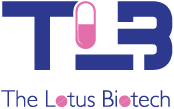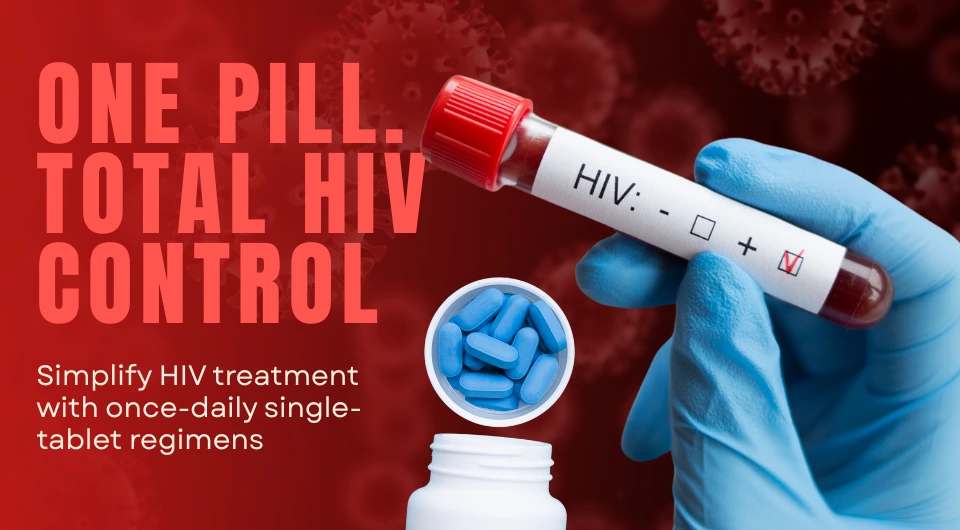The landscape of HIV treatment has dramatically evolved over the past three decades. Once requiring multiple pills taken several times a day, therapy has transformed into simplified, highly effective options. A cornerstone of this evolution is the single-tablet regimen for HIV, a single-pill HIV treatment taken once daily that combines multiple antiretroviral agents into one convenient dose.
Understanding what a single tablet regimen (commonly called STR) is and the benefits of taking HIV medication in this simplified form are essential for people living with HIV, those who know someone who is HIV positive, and healthcare providers alike.
It is essential to recognize that this approach not only enhances adherence but also minimizes side effects and improves long-term health outcomes.
The Evolution of HIV Therapy
In the early years of the HIV epidemic, treatment was complex and demanding. The first HIV drugs, developed in the late 1980s and early 1990s, laid the foundation for modern therapy but often required multiple pills multiple times a day, creating barriers to consistent use.
The introduction of Highly Active Antiretroviral Therapy (HAART) in 1996 marked a breakthrough, combining three or more drugs from different HIV drug classes to achieve viral suppression. Still, pill burdens remained high, affecting adherence.
With advances in pharmaceutical technology, fixed-dose combinations led to the development of single-tablet regimens for HIV, first approved with Atripla in 2006.
These regimens consolidate multiple agents into a single pill taken once daily, simplifying treatment without compromising efficacy. Some of the key milestones in the evolution of HIV treatment are listed in Table 1 below.
| Milestone | Impact |
|---|---|
| Introduction of HAART (1996) | Drastic decline in AIDS-related mortality |
| Approval of the first STR (Atripla, 2006) | Simplified daily regimen for patients |
| New-generation STR (e.g., Biktarvy, Dovato) | Improved tolerability and fewer drug interactions |
Table 1: Key Milestones in HIV Treatment Evolution
How is HIV Treated?
Current HIV treatment guidelines recommend starting ART as soon as possible after a positive diagnosis. The use of STRs aligns with these guidelines due to their simplicity and effectiveness. Treatment usually involves drugs from at least two different HIV drug classes to target the virus at multiple stages of its life cycle.
When Does Stage 1 Acute HIV Infection Typically Occur?
For many newly diagnosed patients, understanding when stage 1 acute HIV infection typically occurs is crucial. Stage 1, also called acute or primary HIV infection, usually happens within 2 to 4 weeks after exposure.
Symptoms may include fever, rash, sore throat, and fatigue, similar to those of a flu-like illness.
Early detection at this stage enables prompt initiation of ART, often with an STR, which can drastically improve health outcomes and reduce transmission risk.
What is a Single-Tablet Regimen?
By now, you must be wondering what exactly a single tablet regimen is. Well, to answer it without sounding like a medical broadcaster,
Single tablet regimen is a type of HIV therapy where two or more antiretroviral drugs are combined into one pill taken once daily.
This strategy is a form of Antiretroviral Therapy for HIV Infection that aims to optimize treatment adherence and clinical outcomes. Single-tablet regimens, sometimes called one-pill-a-day HIV treatments, offer an alternative to multi-tablet regimens (MTRs) by reducing the number of pills a patient must take, minimizing complexity, and lowering the risk of missed doses.
| Brand Name | Drugs Included | Drug Classes |
| Biktarvy | Bictegravir + Emtricitabine + Tenofovir alafenamide | INSTI + NRTIs |
| Dovato | Dolutegravir + Lamivudine | INSTI + NRTI |
| Juluca | Dolutegravir + Rilpivirine | INSTI + NNRTI |
| Odefsey | Rilpivirine + Emtricitabine + Tenofovir alafenamide | NNRTI + NRTIs |
| Symtuza | Darunavir + Cobicistat + Emtricitabine + Tenofovir alafenamide | PI + Booster + NRTIs |
| Albavir | Abacavir + Lamivudine | NRTIs |
| Viropil | Dolutegravir + Lamivudine + Tenofovir disoproxil fumarate | INSTI + NRTIs |
| Taficita | Emtricitabine + Tenofovir disoproxil fumarate | NRTIs |
Table 2: Common FDA-Approved STRs
What Are the Benefits of Taking STRs HIV Medication?
The advantages of effective HIV medication, especially when delivered as an STR, are numerous:
-
Improved Adherence
Adherence to medication is crucial for achieving and maintaining viral suppression. Recent Studies show that patients on STRs have increased compared to patients on multi-pill regimens. This is because single-pill treatment reduces the daily pill burden, simplifies routines, and lowers treatment fatigue.
-
Better Virologic Suppression
STRs support consistent drug levels in the body, leading to higher rates of sustained viral suppression. Achieving an undetectable viral load ot only protects the patient’s immune system but also helps prevent onward transmission, supporting the
-
Complications
Research indicates that STR users experience fewer AIDS-related complications and hospital admissions compared to patients on multi-pill regimens.
-
Enhanced Quality of Life
A simpler regimen supports privacy, reduces stigma, and improves mental health by decreasing the burden of complex dosing schedules.
| “U=U” campaign (Undetectable = Untransmittable). |
-
Lower Risk of Drug Resistance
With improved adherence, the likelihood of incomplete viral suppression and drug resistance is significantly reduced, preserving treatment options for the long term.
Cost Considerations: What Is the Cost of HIV Treatment?
The cost of HIV treatment varies widely across regions and healthcare systems. STRs can be more expensive upfront compared to multiple-pill regimens, but their benefits in improving adherence and reducing hospitalizations often lead to overall cost savings.
Access and affordability remain critical issues, especially in low-resource settings where the full advantages of STRs may not be realized.
The Future of HIV Treatment: Beyond One Pill a Day
The future promises even greater convenience and flexibility in HIV care:
- Long-acting injectables, like monthly or bimonthly cabotegravir and rilpivirine, are now approved and provide an alternative to daily pills.
- Implants and extended-release formulations in development could allow dosing intervals from weeks to months.
- Novel drugs like islatravir and lenacapavir are advancing through clinical trials, potentially revolutionizing HIV treatment further.
- Advances in personalized medicine will enable therapy tailored to individual genetic profiles, improving efficacy and reducing side effects.
Disclaimer: This blog/content is for informational purposes only and should not be considered medical advice. Always consult a healthcare professional before starting any treatment. The content is not intended to diagnose, treat, cure, or prevent any condition. Purchase medications only from reputable sources to ensure safety and authenticity.




